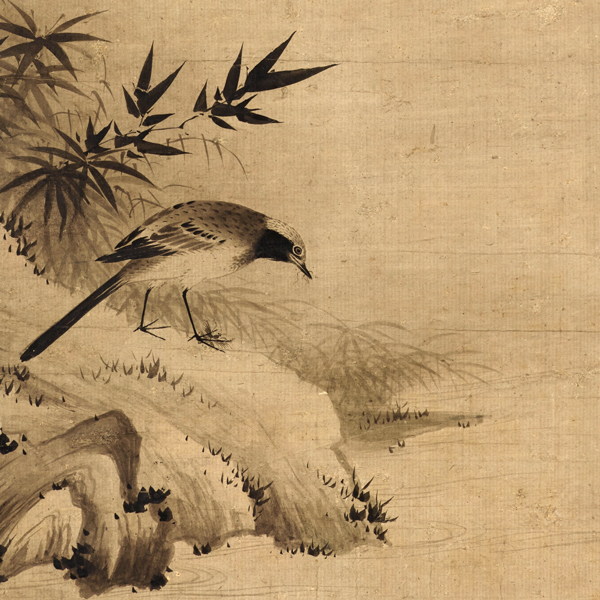Zen and Ink Painting | 13th–16th century
-

Plants and a Bird (detail), By the Ami school, Muromachi period, 15th–16th century
Japanese Gallery (Honkan) Room 3
September 20, 2023 (Wed) - October 29, 2023 (Sun)Zen Buddhism was introduced from China, and had widespread influence on culture in Japan. Zen does not stress elaborate rituals or the study of sacred texts. Rather, it teaches that meditation and daily tasks, even cooking and cleaning, are the way to spiritual enlightenment. In the 13th century, monks brought Zen to Japan as a complete school of Buddhist thought.
These monks also brought the latest cultural practices from China. One of them was ink painting, which uses expressive lines and delicate gradations to portray nature and people. Ink painting spread beyond Zen temples and became a major artistic tradition in Japan.
Another practice was calligraphy by Zen masters, which was prized for its spiritual and aesthetic value. Along with the painting and calligraphy shown here, Zen Buddhism influenced tea ceremony, garden design, and many other forms of art.
| Designation | Name | Creation/ Excavation/ Provenance |
Period | Acquisition/ Ownership/ Accession Number |
CMT | ||
| Highlight | Important Cultural Property | Landscape | By Gakuō Zōkyū | Muromachi period, 15th century | Gift of Mr. Okazaki Masaya, A-10136 | ||
| Highlight | Poem Composed by Jia Dao | By Tesshū Tokusai (died 1366) | Nanbokuchō period, 14th century | B-2493 |
